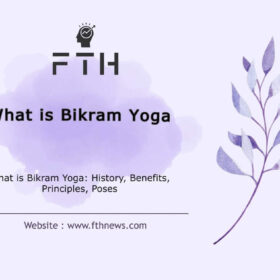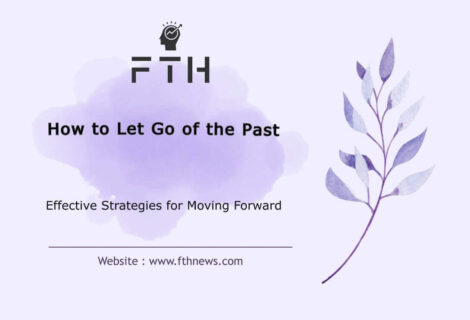
Welcome to the world of Iyengar Yoga, a profound practice rooted in tradition yet perfectly tailored for the modern yogi. In this comprehensive guide, we’ll delve deep into the heart of Iyengar Yoga, exploring its origins, principles, benefits, and how it can transform your mind, body, and spirit.
What is Iyengar Yoga?
Iyengar Yoga is a special way of doing yoga created by B.K.S. Iyengar. It focuses a lot on doing the poses and breathing exercises just right. This style is all about getting strong, flexible, and making sure your body is in the correct position. It’s famous for paying close attention to getting yoga poses (asanas) and breathing (pranayama) just perfect. To help with this, people use things like pillows, chairs, and belts. These props make it easier to get into the right position and do the poses well. By using them, you can improve your yoga practice and feel better in your body.
Origin and Evolution:
B.K.S. Iyengar, who learned from T. Krishnamacharya, crafted Iyengar Yoga to introduce a modernized version of yoga to the Western world. Alongside Pattabhi Jois, who developed Ashtanga Yoga, he became instrumental in spreading yoga’s influence globally. Iyengar’s approach blends breathing exercises, mindful coordination of body and mind, and exacting movements. This fusion of traditional wisdom and contemporary insight has made Iyengar Yoga accessible and beneficial for people worldwide, contributing significantly to yoga’s popularity and relevance in today’s society.
Benefits of Iyengar Yoga:
The benefits of Iyengar Yoga are abundant and extend beyond the physical realm, encompassing various aspects of well-being:
- Improved Posture, Strength, and Flexibility:
Through precise alignment and targeted movements, Iyengar Yoga helps improve posture, build strength, and enhance flexibility. By practicing regularly, practitioners develop a strong, balanced body capable of moving with grace and ease.
- Stress Reduction and Relaxation:
Iyengar Yoga provides a sanctuary from the stresses of daily life, offering practitioners a chance to unwind, relax, and rejuvenate. Through focused breathing and mindful movement, practitioners cultivate a sense of inner calm and peace, reducing stress and promoting relaxation.
- Enhanced Focus and Concentration:
The practice of Iyengar Yoga requires concentration and mindfulness, fostering mental clarity and heightened focus. By tuning into the present moment and focusing on the breath and body, practitioners sharpen their concentration skills, improving cognitive function and mental acuity.
- Relief from Chronic Pain and Tension:
Iyengar Yoga’s emphasis on alignment and therapeutic approach makes it particularly effective in relieving chronic pain and tension. By addressing imbalances in the body and targeting areas of discomfort, practitioners experience relief from common ailments such as back pain, neck tension, and joint stiffness.
- Overall Health and Well-being:
Beyond its physical and mental benefits, Iyengar Yoga promotes holistic health and well-being. By nurturing the body, mind, and spirit, practitioners experience a profound sense of vitality, balance, and harmony, leading to a happier, healthier life overall.
By embracing the practice of Iyengar Yoga, practitioners unlock a wealth of benefits that enrich every aspect of their lives, fostering a deeper connection to themselves and the world around them.
Iyengar Yoga Key Principles:
Iyengar Yoga is built on several key principles, each contributing to its unique and transformative nature:
Alignment:
Precise alignment in each posture promotes balance, strength, and prevents injury. By paying close attention to how the body is positioned in each pose, practitioners cultivate a deeper understanding of their body’s mechanics and optimize the benefits of each posture.
Use of Props:
Props such as blocks, straps, and blankets play a crucial role in Iyengar Yoga, aiding practitioners in achieving correct alignment and enhancing the effectiveness of their practice. These tools provide support where needed, allowing practitioners of all levels to safely explore and deepen their practice.
Mind-Body Connection:
Breath control and mindfulness are integral components of Iyengar Yoga, fostering a profound connection between body and mind. Through conscious awareness of the breath and focused attention on sensations within the body, practitioners cultivate a sense of presence and inner calm, enriching their yoga experience both on and off the mat.
Therapeutic Approach:
Beyond its physical benefits, Iyengar Yoga serves as a powerful therapeutic tool for relieving stress, tension, and promoting overall well-being. With its emphasis on precision, alignment, and mindful movement, Iyengar Yoga offers practitioners a holistic approach to health and healing, addressing not only the physical but also the mental and emotional aspects of well-being.
By embracing these key principles, practitioners of Iyengar Yoga embark on a journey of self-discovery, empowerment, and transformation, unlocking the full potential of their body, mind, and spirit.
Iyengar Yoga Poses:
Iyengar Yoga is renowned for its precise and deliberate approach to yoga poses (asanas), which are carefully selected to promote physical alignment, mental focus, and spiritual connection. Here are some essential poses commonly practiced in Iyengar Yoga:
Tadasana (Mountain Pose):
This foundational pose establishes alignment and awareness, grounding the feet into the earth while elongating the spine and lifting the chest. Hold for 30 seconds to 1 minute, focusing on steady breathing and maintaining alignment.
Vrikshasana (Tree Pose):
Vrikshasana cultivates balance and stability while opening the hips and stretching the arms overhead like the branches of a tree. Hold for 30 seconds to 1 minute on each side, maintaining a steady gaze and steady breath.
Utthita Trikonasana (Extended Triangle Pose):
Trikonasana strengthens the legs, stretches the sides of the body, and improves spinal flexibility, promoting a sense of expansion and openness. Hold for 30 seconds to 1 minute on each side, focusing on lengthening the spine and opening the chest.
Adho Mukha Svanasana (Downward-Facing Dog Pose):
This rejuvenating inversion lengthens the spine, opens the shoulders, and energizes the entire body while calming the mind. Hold for 1 to 3 minutes, focusing on lengthening the spine and relaxing the neck and shoulders.
Virabhadrasana I (Warrior I Pose):
Warrior I builds strength in the legs and core, while opening the chest and shoulders, fostering courage and inner resilience. Hold for 30 seconds to 1 minute on each side, focusing on grounding through the feet and lifting through the chest.
Virabhadrasana II (Warrior II Pose):
Warrior II strengthens the legs and hips, improves balance, and enhances concentration, symbolizing focused determination and steadfastness. Hold for 30 seconds to 1 minute on each side, maintaining a strong foundation and steady gaze.
Paschimottanasana (Seated Forward Bend):
Paschimottanasana gently stretches the entire back of the body, promoting relaxation and surrender while calming the mind. Hold for 1 to 3 minutes, focusing on lengthening the spine and releasing tension with each exhale.
Savasana (Corpse Pose):
This final relaxation pose allows for integration and absorption of the benefits of the practice, promoting deep rest and rejuvenation. Rest in Savasana for 5 to 10 minutes, allowing the body and mind to relax completely and absorb the benefits of your practice.
These poses, among others, are sequenced and practiced with precision and attention to detail in Iyengar Yoga classes. Each pose serves as a gateway to deeper self-awareness, inner strength, and holistic well-being, guiding practitioners on a transformative journey of self-discovery and growth. Through consistent practice and dedication, Iyengar Yoga poses become not only physical exercises but also tools for personal transformation and spiritual awakening.
How to Practice Iyengar Yoga:
Embarking on your journey into Iyengar Yoga can be both exciting and rewarding. Whether you’re a complete beginner or have some experience with yoga, here are some essential steps to guide you through your practice:
Find a Certified Iyengar Yoga Instructor:
The guidance of a certified Iyengar Yoga instructor is invaluable, especially when you’re starting out. Look for teachers who have completed rigorous training in the Iyengar method and hold certification from reputable organizations. A knowledgeable instructor will provide clear instruction, alignment cues, and personalized guidance to support your practice.
Begin with the Basics:
Start your Iyengar Yoga journey by focusing on foundational poses and alignment principles. Begin with simple asanas such as Tadasana (Mountain Pose), Uttanasana (Standing Forward Bend), and Adho Mukha Svanasana (Downward-Facing Dog). Pay close attention to alignment details and use props like blocks, straps, and blankets to support your practice as needed.
Cultivate Awareness through Breath:
Breath awareness is a cornerstone of Iyengar Yoga. Focus on deep, steady breaths as you move through each pose. Use the breath to guide your movements and deepen your connection to the present moment. Cultivating mindfulness in your practice will enhance your awareness of body, breath, and mind.
Practice Regularly:
Consistency is key in Iyengar Yoga. Aim to practice regularly, even if it’s just for a few minutes each day. Regular practice allows you to experience the cumulative benefits of yoga, building strength, flexibility, and inner resilience over time. Set aside dedicated time for your practice and make it a priority in your daily routine.
Listen to Your Body:
Honor your body’s unique needs and limitations as you practice. Pay attention to any sensations of discomfort or strain and adjust your poses accordingly. Remember that yoga is a journey of self-discovery, not a competition. Listen to your body’s wisdom and practice with compassion and self-acceptance.
Seek Continual Learning:
Iyengar Yoga is a lifelong journey of learning and exploration. Stay curious and open-minded as you delve deeper into your practice. Attend workshops, classes, and retreats to expand your knowledge and deepen your understanding of yoga. Embrace the opportunity to learn from experienced teachers and fellow practitioners.
Practice Patience and Persistence:
Like any new endeavor, progress in yoga takes time and dedication. Be patient with yourself and trust in the process of growth and transformation. Celebrate your successes, no matter how small, and approach challenges with resilience and determination. With consistent effort and a positive attitude, you’ll continue to evolve and flourish on your yoga journey.
By following these steps and approaching your practice with sincerity and dedication, you’ll embark on a transformative journey of self-discovery, empowerment, and well-being through Iyengar.
Who Can Practice Iyengar Yoga?
Iyengar Yoga welcomes practitioners of all levels, from beginners to seasoned yogis, offering a comprehensive approach that caters to individual needs and abilities. Its emphasis on precise alignment, mindful movement, and the use of props makes it accessible to a wide range of practitioners, including:
- Beginners: Iyengar Yoga provides a solid foundation for beginners, offering clear instruction and guidance to help them build strength, flexibility, and confidence in their practice.
- Intermediate and Advanced Practitioners: For those seeking to deepen their practice, Iyengar offers a rich and diverse repertoire of poses, variations, and sequencing to challenge and inspire practitioners at every level.
- Individuals with Chronic Pain or Physical Limitations: The therapeutic approach of Iyengar makes it particularly beneficial for individuals dealing with chronic pain, injuries, or physical limitations. With its focus on precise alignment and the use of props, Iyengar offers a safe and effective way to relieve pain, improve mobility, and enhance overall well-being.
Who Should Avoid Iyengar Yoga?
While Iyengar is generally safe for most individuals, there are certain cases where caution should be exercised:
- Neck or Back Issues: Individuals with pre-existing neck or back issues should proceed with caution when practicing Iyengar. While the practice can be beneficial for strengthening and supporting the spine, it’s essential to work with a qualified instructor who can provide personalized guidance and modifications to ensure safety and prevent further injury.
- Pregnant Individuals: While Iyengar can be beneficial for pregnant individuals, certain poses and practices may need to be modified or avoided altogether. It’s crucial for pregnant individuals to work with a knowledgeable instructor who can provide appropriate modifications and support throughout their pregnancy journey.
By practicing with mindfulness, awareness, and under the guidance of a qualified instructor, individuals of all levels can experience the transformative benefits of Iyengar, cultivating strength, flexibility, and inner harmony on their yoga journey.
he Distinction Between Iyengar Yoga and Other Styles:
1. Emphasis on Alignment and Precision:
- Iyengar Yoga: Iyengar places a strong emphasis on precise alignment in each pose, focusing on correct anatomical positioning to promote safety, stability, and optimal energy flow.
- Other Styles: While alignment is important in all styles of yoga, Iyengar Yoga is renowned for its meticulous attention to detail, with instructors often providing extensive verbal cues and hands-on adjustments to help students achieve proper alignment.
2. Use of Props:
- Iyengar Yoga: Props such as blocks, straps, blankets, and chairs are commonly used in Iyengar to support practitioners of all levels in achieving correct alignment and deepening their practice.
- Other Styles: While props may be used in other styles of yoga, their utilization is typically less prominent and may vary depending on the instructor’s preferences and the specific needs of the students.
3. Therapeutic Approach:
- Iyengar Yoga: Iyengar is known for its therapeutic approach, with a focus on using yoga asanas to address specific physical ailments, injuries, and chronic conditions.
- Other Styles: While all styles of yoga offer physical and mental benefits, Iyengar Yoga’s therapeutic focus sets it apart, with instructors often tailoring sequences to target specific areas of the body or address individual student needs.
4. Slow and Methodical Pace:
- Iyengar Yoga: Iyengar classes typically move at a slower pace, allowing ample time for students to explore each pose mindfully, refine their alignment, and deepen their awareness of breath and body.
- Other Styles: While some styles of yoga may incorporate elements of slow, mindful movement, Iyengar is characterized by its deliberate and methodical approach to each pose, with a strong emphasis on precision and attention to detail.
5. Sequencing and Progression:
- Iyengar Yoga: In Iyengar, poses are often sequenced in a logical progression, with each class building upon the foundations established in previous sessions. Students may start with simpler poses and gradually work towards more challenging asanas as their practice evolves.
- Other Styles: While sequencing may vary depending on the instructor and the style of yoga, Iyengar Yoga’s systematic approach to progression sets it apart, providing students with a structured framework for advancing their practice over time.
In summary, while all styles of yoga share common principles such as breath awareness, mindfulness, and physical movement, Iyengar stands out for its meticulous attention to alignment, therapeutic focus, use of props, and methodical approach to sequencing and progression. Through its emphasis on precision, safety, and individualized instruction, Iyengar offers practitioners a transformative path to physical, mental, and emotional well-being.
Therapeutic Benefits of Iyengar Yoga:
Research continues to unveil the therapeutic advantages of Iyengar for various health conditions. Studies explore its efficacy as a complementary therapy in integrative healthcare settings.
Chronic Pain Management:
Numerous studies have investigated the effectiveness of Iyengar in managing chronic pain conditions such as lower back pain, arthritis, and fibromyalgia. Regular practice can reduce pain intensity, improve mobility, and enhance quality of life.
Anxiety and Depression:
Iyengar Yoga’s emphasis on breath awareness, mindfulness, and relaxation techniques makes it beneficial for managing symptoms of anxiety and depression. Research shows it can reduce levels of anxiety and depression, improve mood, and enhance overall well-being.
Hypertension and Cardiovascular Health:
Preliminary studies suggest Yoga may positively impact blood pressure regulation and cardiovascular health. Regular practice, coupled with lifestyle modifications, may help reduce blood pressure levels, improve vascular function, and lower the risk of cardiovascular disease.
Other Health Conditions:
Research extends to various conditions, including insomnia, multiple sclerosis, Parkinson’s disease, and cancer survivorship. While more studies are needed, preliminary evidence suggests promising outcomes.
Integration into Healthcare Practices:
As evidence accumulates, healthcare professionals increasingly integrate Yoga into integrative healthcare practices. Programs are offered in hospitals, clinics, and community settings as part of comprehensive treatment plans.
In Conclusion:
Iyengar Yoga is not just a physical exercise but a holistic path to health, harmony, and self-discovery. By embracing its principles and practices, you can unlock the full potential of your body, mind, and spirit. Whether you’re seeking relief from pain, stress, or simply looking to deepen your yoga practice, Iyengar Yoga offers a transformative journey that transcends the mat and permeates every aspect of your life.
So, roll out your mat, breathe deeply, and embark on the extraordinary journey of B.K.S. Yoga. Your body, mind, and soul will thank you for it.
FAQ
Yes, Iyengar yoga is beginner-friendly.
No, Iyengar yoga is not religious; it emphasizes physical and mental well-being.
The primary focus of Iyengar is alignment and body awareness.
There are hundreds of poses in Iyengar, offering variety and progression.














